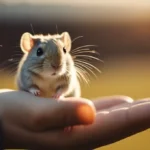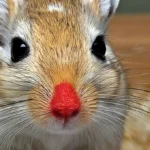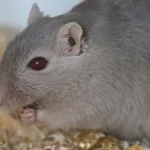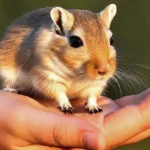Gerbils have long been cherished as adorable and low-maintenance pets, fascinating their owners with their playful antics and sociable nature.
However, when it comes to their reproductive health, many gerbil owners find themselves puzzled, particularly regarding the question: Do gerbils have periods?
In this article we will discuss about the reproductive cycle of gerbils, and how these small rodents manage their fertility and what signs indicate they are ready to mate.
Understanding Gerbil Reproduction
The Estrous Cycle in Gerbils
Unlike humans, gerbils do not experience a menstrual cycle. Instead, they go through what is known as the estrous cycle. This cycle is crucial for understanding gerbil reproduction as it dictates the periods when a female gerbil is fertile and ready to mate.
The estrous cycle in gerbils is significantly different from the menstrual cycle in humans, primarily because gerbils do not shed the lining of their uterus as humans do.
Instead, any unused lining is reabsorbed by the body, a process that is both efficient and less noticeable to the pet owner.
Mating Behaviors and Fertility
Gerbils are known for their strong mating instincts, which are most apparent when females enter their estrous cycle approximately every 4 to 6 days. During this time, both male and female gerbils exhibit specific behaviors indicative of their readiness to mate.
These behaviors include more frequent and vigorous interactions, such as chasing and mounting. Fertility in gerbils is generally high, with females capable of becoming pregnant almost every time they mate.
This high fertility rate is essential for the survival of the species, especially in the wild, where conditions can be harsh.
Do Gerbils Have Periods?
The short answer is no; gerbils do not have periods in the way humans understand them. The confusion often arises from the use of the term “period” to describe any reproductive cycle in animals.
In gerbils, the absence of a menstrual cycle means there is no regular shedding of the uterine lining and no associated bleeding. This adaptation is not only cleaner from a pet care perspective but also represents a more efficient way to manage fertility in the animal kingdom.
Gerbils, like many other rodents, have evolved reproductive strategies that maximize their chances of producing offspring without the need for a menstrual cycle.
Understanding the reproductive cycle of gerbils is crucial for any pet owner considering breeding their pets or simply aiming to provide the best care possible.
By recognizing the signs of the estrous cycle and mating behaviors, owners can ensure their gerbils are healthy, happy, and, if desired, ready to contribute to the next generation of these delightful pets.
Recognizing the Signs of Heat in Gerbils
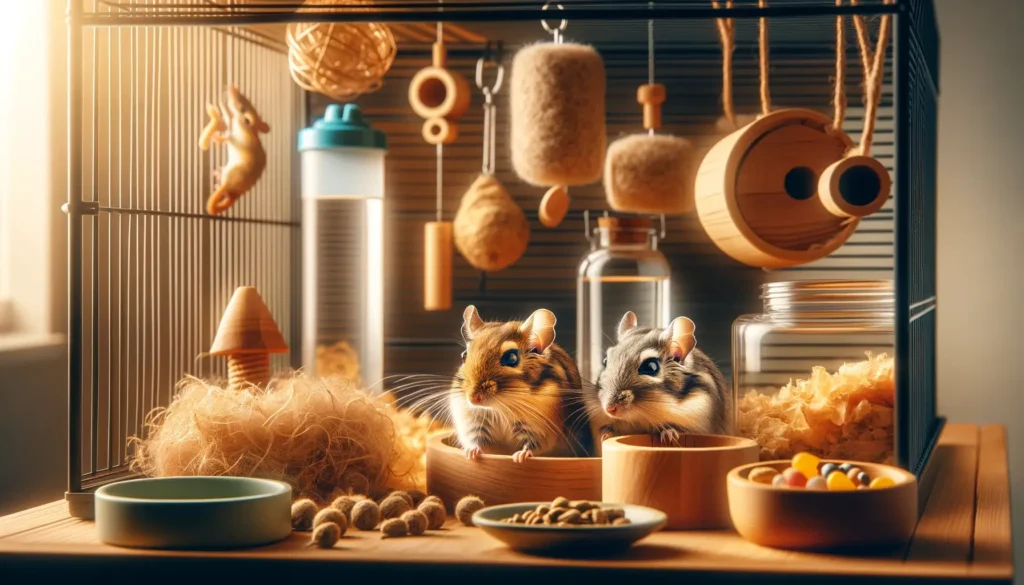
Gerbil owners often wonder how to tell when their furry friends are ready to mate. Understanding the signs of heat in gerbils is essential for those interested in breeding or simply aiming to comprehend their pet’s behavior better.
Female gerbils enter heat approximately every 4 to 6 days and exhibit specific behaviors and physical signs during this fertile period.
The most noticeable sign of a gerbil in heat is a sudden increase in activity and interaction. Female gerbils may become more playful, engaging in a game of chase with their cage mates or showing a heightened interest in their surroundings.
Physically, you might notice the female presenting herself to a male or even to other females if no male is present, a behavior characterized by a slight lift of the hindquarters and a pause in movement, inviting mating.
Male gerbils, on the other hand, may become more territorial and show increased interest in females. It’s a fascinating dance of nature, observable in the comfort of your home, providing insights into the complex social behaviors of these small rodents.
Handling Gerbil Reproduction
Breeding Considerations
Breeding gerbils requires a responsible approach and a good understanding of their needs. Gerbils form monogamous pairs, often staying with a single partner for life. This unique trait among rodents means that once a pair is formed, they should not be separated or re-paired.
When planning to breed gerbils, ensure they have a comfortable, stress-free environment, as stress can negatively affect the female’s ability to conceive and carry a pregnancy to term.
Proper care during pregnancy is crucial. Pregnant gerbils should have access to a nutritious diet, plenty of water, and a calm, quiet nesting area. As the birth approaches, minimize handling to reduce stress on the expectant mother.
Also read: How To Stop Gerbils From Breeding?
Common Reproductive Health Issues
While gerbils are generally hardy animals, they can encounter reproductive health issues. Observing your gerbils closely and maintaining a clean, safe environment can help prevent many common problems.
However, if you notice any signs of distress or unusual behavior, consulting with a veterinarian experienced in small rodents is advisable.
FAQs
Do male gerbils have a role in the reproductive cycle?
Male gerbils are integral to the reproductive process, not only for mating but also for providing support by building nests and caring for the young alongside the female, showcasing a unique partnership in the animal kingdom.
How can I tell if my gerbil is pregnant?
Pregnancy in gerbils can be subtle but watch for weight gain, nesting behavior, and a fuller abdomen. Providing a nurturing environment is crucial as you monitor these potential signs of pregnancy.
Is it normal for gerbils to mate frequently?
Frequent mating is typical among gerbils, especially when the female is in heat. This behavior is a natural reproductive strategy to ensure the continuation of their lineage.
Can gerbils experience reproductive health problems?
Gerbils, like all animals, can face reproductive challenges, including infertility or birthing complications. Preventive care, such as a nutritious diet and clean living conditions, can help mitigate these risks.
Conclusion
In exploring the fascinating world of gerbil reproduction, we’ve uncovered the intricacies of their estrous cycle, mating behaviors, and the attentive care they require during breeding.
Understanding these aspects not only enriches our knowledge but also enhances our ability to provide the best care for these delightful creatures.
Whether you’re breeding gerbils or simply curious about their behaviors, remember that responsible pet ownership and a deep appreciation for their natural instincts are key to fostering a healthy, happy gerbil family.







